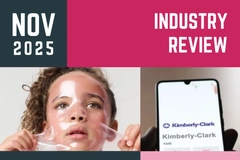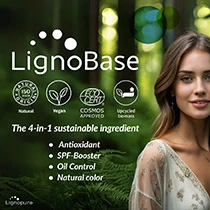US surpasses China as K-beauty’s top market amid record-breaking exports
Key takeaways
- Korea’s cosmetics exports hit a record US$8.52 billion, up 15.4% year-on-year.
- The US surpassed China as Korea’s top beauty export market.
- Skin care led sales, boosted by K-beauty’s growing US presence.

South Korea’s cosmetics exports have surged to a record US$8.52 billion in the first nine months of 2025, up 15.4% from last year, according to the Korea Customs Service.
Exports in the third quarter climbed 17.6% to US$3.02 billion, extending the country’s growth streak to nine consecutive quarters. According to the Korean Customs Service, the achievement marks the longest such run in the sector’s history.
Officials attribute the K-beauty momentum to strong overseas demand and market diversification. Korean beauty products were shipped to 205 countries, the widest reach ever recorded.
China used to be Korea’s top export destination, but sales there continue to decline. New markets, however, are now picking up the slack.
For 2025, South Korea’s cosmetics sector is on track to surpass its 2024 full-year record of US$10 billion for the second year in a row, predicting accelerated shipments toward the end of the year.
Market shifts
The Ministry of Food and Drug Safety reported that from February through September 2025, South Korea set monthly export records. September hit US$1.17 billion, jumping 28.5% year-on-year.
The US has now overtaken China as Korea’s largest export destination. Shipments to the US totaled US$1.67 billion in the first three quarters, representing 19.6% of total exports and an 18.1% increase from last year.
However, shipments to China continued to decline. Exports fell 11.7% year-on-year, dropping to US$1.58 billion. This amounts to 18.6% of total sales, which is down from 52.9% in 2021.
.webp) Skin care led sales, boosted by K-beauty’s growing US presence.Officials say weaker consumer confidence, domestic competition, and evolving regulations have reshaped the market.
Skin care led sales, boosted by K-beauty’s growing US presence.Officials say weaker consumer confidence, domestic competition, and evolving regulations have reshaped the market.
Meanwhile, Japan maintained steady growth as it imported US$820 million worth of Korean cosmetics — a 10.4% increase.
Korean brands tapped into online retail ecosystems, localized campaigns, and made advances in the Middle East, Latin America, and Eastern Europe.
“Diversification into new markets and stronger partnerships with existing buyers have sustained export growth, even as demand patterns shift,” a Korea Customs Service spokesperson says.
Categoric expansion
Skin care remained K-beauty’s strongest category. Basic products like moisturizers, toners, and lotions made up 41.7% of total overseas sales and generated US$6.32 billion in exports. This is a 14.6% rise from the same period last year.
Color cosmetics, including lipsticks and eyeshadows, climbed 18.9% to US$1.16 billion. Meanwhile, personal care products, such as sunscreens and wrinkle-care creams, surged 25.4% to US$420 million.
The Korea Customs Service confirmed that every major product segment posted its best-ever quarterly performance between January and September. The customs service attributes the success to digital marketing innovations, K-pop’s global influence, and the expansion of cross-border e-commerce platforms such as Qoo10 Japan and Shopee.
.webp) China used to be Korea’s top export destination, but sales there continue to decline.US retail visibility has also been a growth driver. Korean brands like Laneige, Cosrx, and Innisfree now enjoy shelf space in Ulta Beauty and Target. Distributors such as Silicon2 are scaling up international logistics hubs to meet demand.
China used to be Korea’s top export destination, but sales there continue to decline.US retail visibility has also been a growth driver. Korean brands like Laneige, Cosrx, and Innisfree now enjoy shelf space in Ulta Beauty and Target. Distributors such as Silicon2 are scaling up international logistics hubs to meet demand.
K-beauty brands are increasingly touching base in the US, to dodge tariff-related headwinds and expand access to their products for their most tenacious buyers. Last month, the e-commerce company Lunara Cosmetics launched domestic sourcing partnerships in the US to eliminate import barriers for Korean skin care.
Meanwhile, earlier this year, Kolmar Korea announced it had completed construction on its second manufacturing facility in the US.
A company spokesperson said, “We’re ready to support K-beauty brands looking to enter the US market without tariff concerns, as well as global customers aiming for North American, European, and South American markets. Our collaboration ecosystem is poised for rapid expansion.”













